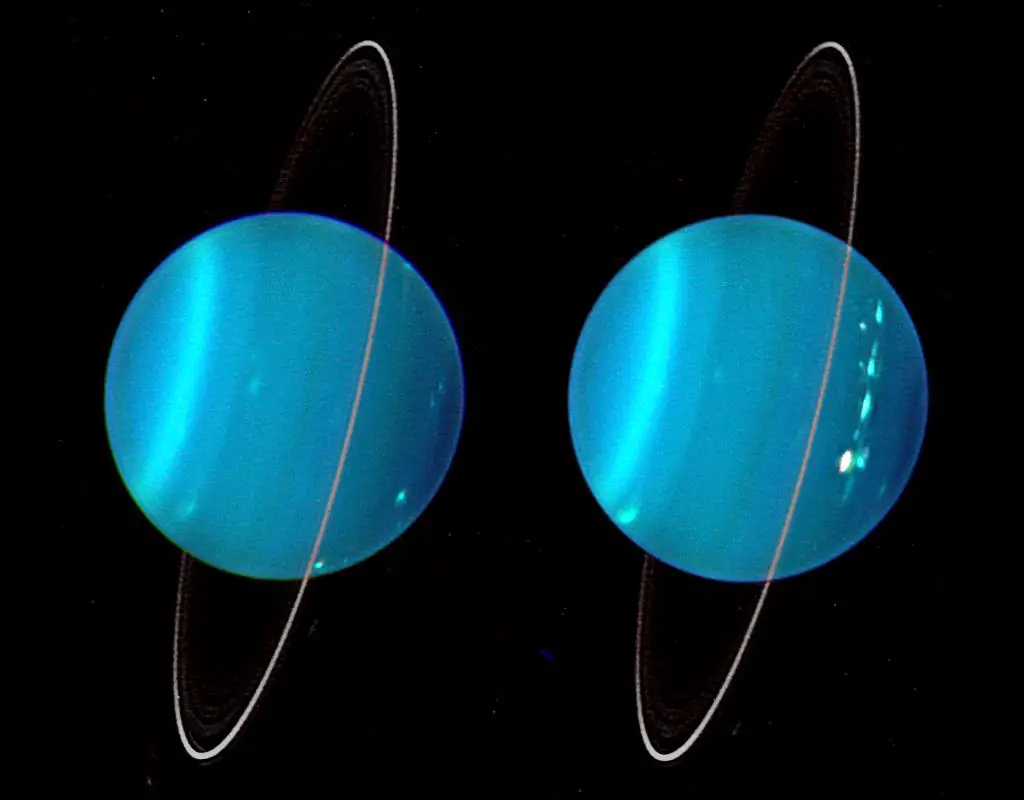
Uranus is the seventh planet in our solar system. It was discovered in 1781 by astronomer William Herschel. Astronomers discovered it for the first time in 1781 using a telescope. When Herschel noticed this planet through his telescope, he thought it was a comet or a star.
He tried to name the planet Georgium Sidus after King George III. Johann Bode suggested naming it Uranus after the Greek sky god.
Uranus’s size and distance compared to Earth
The planet is 4 times the size of the earth. and is at a distance of 1.8 billion miles (around 2.9 billion kilometers) from the sun. In astronomy terms, it is almost 20 astronomical units away from the Sun. It takes light 2 hrs & 40 mins to travel from Sun to Uranus.

Uranus Orientation
As we know, the earth’s axis has a tilt of 23 degrees. Uranus’s axis has a tilt of 98 degrees. It makes the pole of Uranus completely perpendicular to the Sun. Long ago, an Earth-sized planet collided with Uranus, which resulted in a change in the orientation of Uranus’s axis. Another theory that suggests the change in orientation is because of the gravitational pull of other nearby big planets in our solar system, Over time, the gravitational pull of big planets affected this planet and caused the shift in its orientation.
It takes this planet about 17 hours to complete one rotation around its own axis. One Uranus year is equal to 84 earth years. It is so far, that it is obvious that it takes almost one human lifetime to complete one year on Uranus.
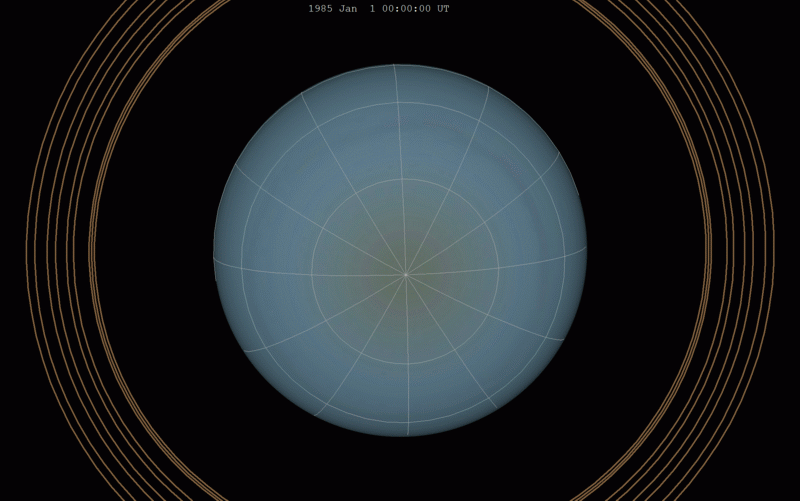
The orientation of Uranus results in the most extreme seasons on the planet. Because of its orientation, one pole will point toward the sun for 42 years and another pole for 42 years. This makes one season 21 years long. During each Uranian year, one-quarter of the sun shines directly over the pole of Uranus, which sends the remaining planet into a dark, cold winter.
Uranus Rotation
Unlike other planets in the solar system, Venus and Uranus are the two planets that have a retrograde rotation. It means these two planets rotate in opposite directions than most planets in the solar system.
The reason for this retrograde rotation is the same as what caused the change in the orientation of Uranus. All the moons of the planet also orbit in the direction of Uranus’s rotation.
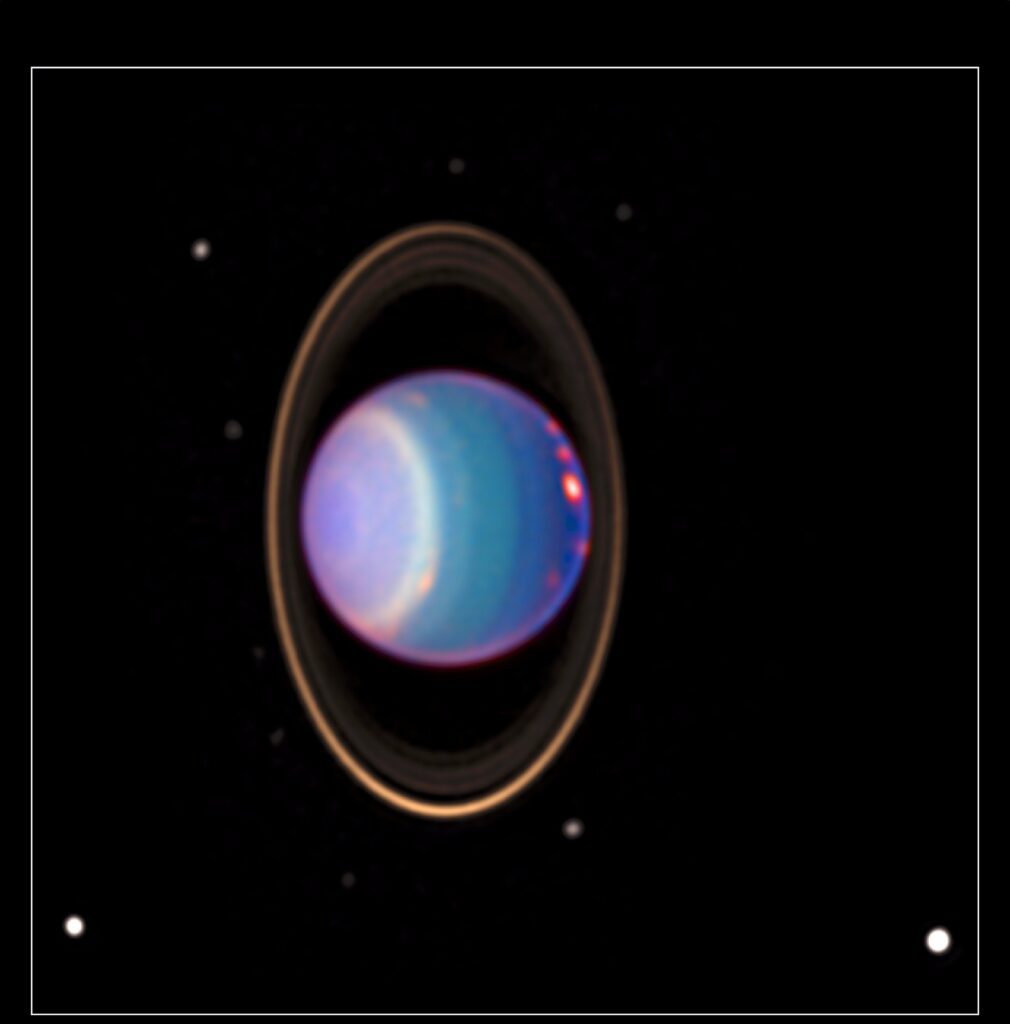
Scientists do not yet know what exactly caused the orientation and rotation change in Uranus. It is also believed that it might be a result of the combination of all the factors mentioned above that resulted in this.
How many moons does Uranus have?
So far, it has 27 known moons. The moons are quite diverse. Some of them are just 1 km big, and others are more than 1000 km big. All these moons are also not similar and have different surface structures. Some moons have craters; some have canyons; and some just have volcanoes.
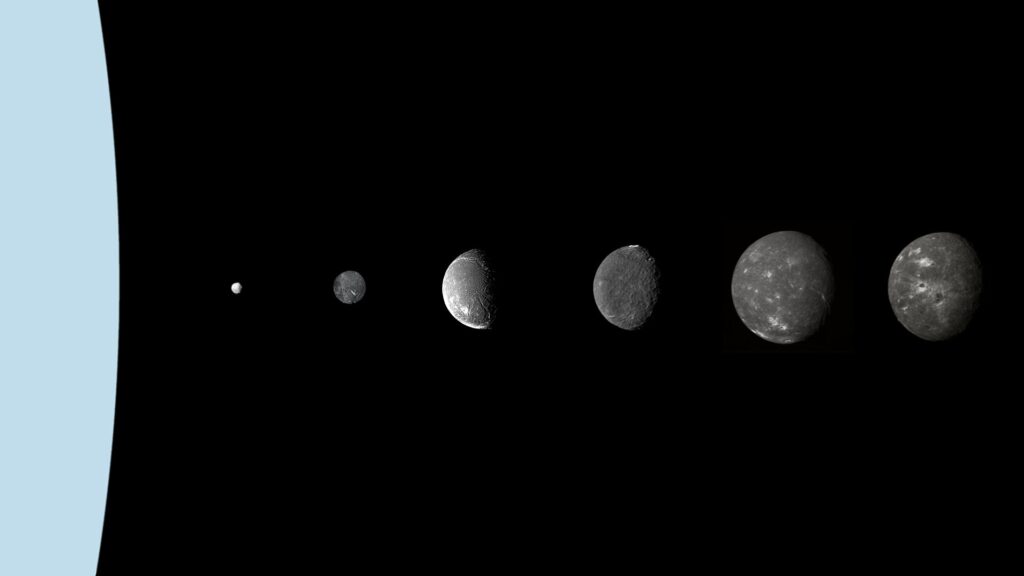
The five biggest moons of Uranus are Miranda, Ariel, Umbriel, Titania, and Oberon. William Herschel himself discovered all five moons of Uranus. Many of the moons from the 27 are discovered recently after spacecraft missions. Those moons are tiny, faint, and very irregular in shape. So, it is a possibility that we will find more moons of Uranus that are very faint and difficult to see.
The rings of Uranus
Uranus has a total of 13 rings. There are two sets of rings on Uranus: the inner set and the outer set. The inner set is the first nine rings. They were found by the year 1977. They are narrow and mostly dark grey rings. The next 4 rings are the outer rings, of which 2 rings were discovered by the Voyager 2 spacecraft. The Hubble telescope discovered other 2 rings.
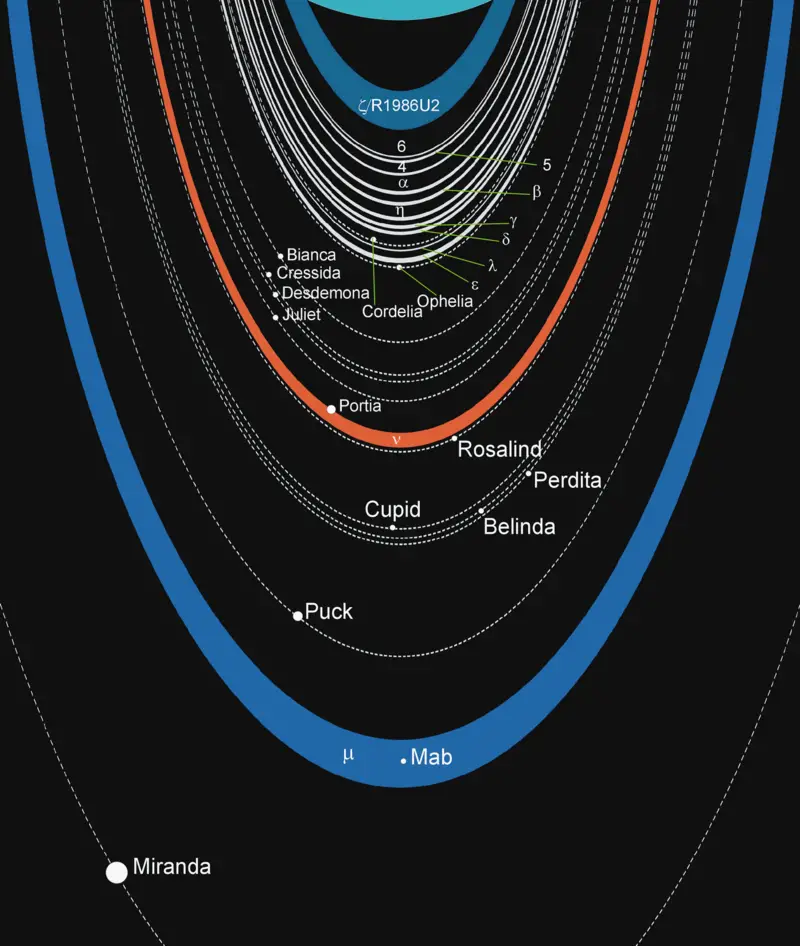
The rings of Uranus are quite different from those of Saturn. They are very thin, more diffuse, and less stable. These rings are quite dark and are made of water-ice particles with impurities like dust and small rocks.
As mentioned earlier, the rings of Uranus are not stable. They are constantly changing shape and size, especially the ring arcs of these rings. In many cases, the rings are disappearing completely.
Composition of Uranus
It is similar to other gas giants in our solar system, like Jupiter and Saturn. It is one of the ice giants in our solar system. Almost all of the planet’s mass consists of hot, fluid, icy materials. The core temperature of the planet is 5000 degrees Celsius.
Uranus’s interior is divided into several layers:
- The atmosphere is the outermost layer of Uranus, composed mostly of hydrogen and helium with trace amounts of methane, ammonia, and other gases. Strong winds, cloud bands, and bright clouds characterize the atmosphere.
- The hydrogen-helium layer: This layer lies beneath the atmosphere and has mostly hydrogen and helium. This layer is thought to be in a liquid metallic state, where the hydrogen atoms are ionized and can conduct electricity.
- The ice layer: This layer lies beneath the hydrogen-helium layer and has water, methane, and ammonia ice. The pressure and temperature increase as you move deeper into this layer.
- The rocky-metal core is the innermost layer of Uranus, composed mostly of rock and metal. In terms of size, the layer is about the size of the earth. There is some water ice in the core, as well as rock and metal.
The blue-green color of the planet comes from methane gas in the atmosphere. Clouds at the top of Uranus’s atmosphere reflect sunlight. Methane gas absorbs the red portion of the light, resulting in a blue-green color.
Can we land on Uranus with a spacecraft or robot mission?
The planet doesn’t have any true surface; it is mostly swirling fluids. The spacecraft would have no place to land on Uranus. The atmosphere of the planet would destroy any spacecraft we sent there. The winds on Uranus go at a speed of around 600 km/h.
The wind at the equator is in retrograde motion, which means it travels in the opposite direction of the planet’s rotation, and near the pole, it is prograde and travels in the direction of the planet’s rotation.
Is life on Uranus possible?
A planet needs to be in the habitable zone of its star for life to exist. Uranus is too far away to be in a habitable zone. Though the planet appears bluish in color like the earth, which might give the feeling of a huge ocean on Uranus, that is not the case. The blue color is just a light reflection from its top clouds.
The planet contains significant amounts of hydrogen and methane. Both of these gases are highly inflammable, but there is no free oxygen on Uranus. There is not a single thing that suggests that this planet can support life. So life on such a planet is impossible.
Learn more about astronomy and stargazing on the other section of our website. You can also subscribe to our Youtube channel.





